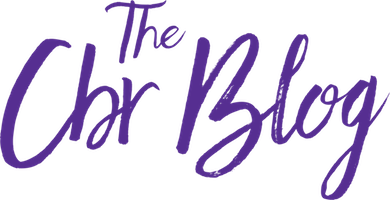March marks Cerebral Palsy Awareness Month, which began with the goal of generating research for preventing, treating, and curing cerebral palsy
CBR is partnering on two FDA-regulated clinical trials focused on cerebral palsy that are currently enrolling children diagnosed with the disorder.
Georgia Regents University
In the first trial we’re highlighting for Cerebral Palsy Awareness Month, CBR teamed up with researchers at Georgia Regents University to evaluate the use of cord blood stem cell infusions as a possible treatment for children with cerebral palsy. To ensure consistency in cord blood stem cell collection and processing methods, participants in the study are children whose families have banked cord blood specifically with CBR, the only stem cell bank participating in the study.
“Autologous stem cell transplantation, in which the transplant recipient is also the donor, is the safest form of stem cell transplantation because it carries virtually no threat of immune system rejection.”
– Dr. James Carroll, Principal Investigator, Georgia Regents University
University of Texas Health Science Center at Houston
The second trial we’re reviewing for Cerebral Palsy Awareness Month is in collaboration with University of Texas Health Science Center at Houston. The study aims to compare the safety and efficacy of an intravenous infusion of banked cord blood stem cells vs. freshly harvested bone marrow stem cells as a possible therapy for children with cerebral palsy. Half of the participants will receive an autologous stem cell infusion from their own CBR processed and stored cord blood unit, and the other half will undergo a bone marrow harvest and autologous bone marrow stem cell infusion.
“Preclinical data indicates that ongoing neuroinflammatory response is a driver of further injury in cerebral palsy, so the hope (with this trial) is to reduce this neuroinflammation and break the cycle.”
– Dr. Charles Cox, Principal Investigator, University of Texas Health Science Center at Houston
Stay tuned for results on these clinical trials.
Cerebral palsy, caused by a brain injury or lack of oxygen in the brain before birth or during the first few years of life, can impair movement, learning, hearing, vision, and cognitive skills. According to the Centers for Disease Control and Prevention, roughly 1 in every 323 children in the United States has been diagnosed with cerebral palsy. While a variety of physical therapies exist for cerebral palsy, there are no known cures. Cord blood stem cell clinical trials may help pave the way for new potential treatment options to emerge.
Sources:
“Cerebral Palsy Clinical Trials.” Cord Blood Registry. CBR Systems, Inc., 1995-2016. Web. Date of Access: February 10, 2016



Hi Gina & CBR,
How do we submit our son for consideration in either/both of these? He is a client, both of our sons are, and he is 3 years old with CP Ataxia.
Thank you for your time,
Heidi
Hi Heidi,
Thank you for reaching out to us. Please complete this form to connect to stem cell research clinical trials: https://www.cordblood.com/stem-cell-research/cord-blood-research/clinical-trials. If you have any specific questions, please call us and ask to speak with a Genetic Counselor at 888.240.1990.
Thank you. Our information has been submitted for consideration.
I have my oldest child who’s 14 years old born at 23wks, he has spastic quadriparesis CP and CVI with Epilepsy. He was too premature to save enough stem cells. His half siblings have theirs save with CBR. One has stage 3 kidney disease and asperger’s (born at 26 weeks). He only has stem cells saved. The other has nonverbal autism (born at 35 weeks). He has tissue and stem cells saved. Are their any treatments for them available to them?
If you’d like to learn more about how genetic matching works, the potential of regenerative medicine, and answers to other questions, our educators can help at 888.240.1996
I have a daughter who is 17y.o. With spastic quadraplegia CP. I banked my youngest daughter cord blood cells in 2009.I wanted to know how can she be evaluated to be a participant in the new CP studies
Please reach out to our team for more information on studies that are currently being conducted. You can log into your account here: https://clients.cordblood.com/my-account/ Wishing you all the best.